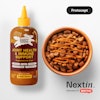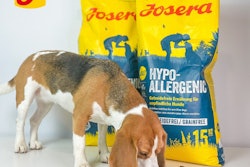
Intel and NutraSweet serve as two well-known examples of advertising the component of a product directly to consumers. Ingredient supplier branding aims to build preferences among end buyers. The goal is to make manufacturers believe that incorporating these components will enhance the products' appeal to consumers, wrote researchers in the Journal of Business and Industrial Marketing. Could a pet-food-ingredient supplier market their products like Intel, Splenda, Nutrasweet or ZEISS lenses?
No home PC owner uses an Intel chip by itself, but the company advertises their product to personal computer buyers. On the other hand, AMD makes fine processors too, but the average home computer buyer won’t recognize that brand, nor does its name immediately bring to mind a slogan like “Intel Inside.” While hardcore gamers debate the merits of the two chips, Intel has an advantage with the less techy public. Most folks don’t understand (or particularly care about) the single-threaded performance ratio of a particular chip. They just want to play a game of Civilization 6 or stream a high-def movie without the machine bogging down. Likewise, pet owners don’t know about amino acid ratios in novel protein sources. They want to know that their pets’ foods are safe, nutritious and ethical. Pet food ingredient suppliers could help provide that assurance by making consumers aware of their product, developing a brands’ reputation and increasing transparency.
Benefits of advertising pet food ingredients to consumers
Developing positive relationships directly with consumers could benefit pet food ingredient suppliers. During the melamine recalls of 2007, hundreds of dogs and cats began dying after mysterious crystals blocked their kidneys. The stricken pets had all eaten pet food adulterated with melamine and cyanuric acid by a China-based ingredient supplier. The repercussions of that event continue as some customers still avoid pet foods made with ingredients from China. Numerous pet food companies market their products as not containing ingredients from China, which some have called Sinophobic. Another approach might be for a pet food ingredient company to market themselves to consumers as a dependable source of tested raw materials. Seeing a logo for that brand on a bag could reassure consumers through positive marketing claims, without the risk of alienating one and half billion people or so. Meat renderers could follow a similar track, considering the pentobarbital recalls of a few years ago.
Even before the melamine recalls, dog, cat and other pet owners had been using the internet to do their own research on brands. In the intervening decade and a half, pet owners went online at ever-increasing rates to find more information about their pets’ food and what goes into it. Pet food and treat brands adapted to this and began offering more detailed information online about nutrition and health aspects of their products. Likewise, consumers want to know about pet food’s provenance from a social and ecological standpoint. After reports of slave labor in the pet food supply chain, consumers increased their scrutiny of brands’ human rights records. Consumers’ growing sense of responsibility for how their purchases affect others has also boosted environmental awareness. The effects of climate change, habitat destruction and resource depletion will increasingly affect people’s lives and fuel concerns about maintaining our current living standards in the future. Pet food brands themselves have taken on the sustainability cause, perhaps more than other industries since pet owners tend to be sympathetic to wild animals and livestock due to loving their own dogs, cats, snakes, pigs and other pets. A pet food ingredient supplier could latch on to these consumer demands, but only if the company had truly adopted practices that reduce resource use, pollution and other pressures on the ecosystems that all people depend on for food, water, medicine and other products.
Along with protecting humanity’s shared future, pet food ingredient suppliers themselves could be saved by building a good reputation. Most pet food recalls don’t involve ingredient suppliers openly, but the very rareness of the events makes them stand out. For example, a DSM employee accidentally added an extra barrel of vitamin D instead of vitamin E to batches of pre-mix vitamins meant for Hill’s Pet Nutrition canned dog food, reported Veterinary Information Network News Service. Subsequently, in January 2019, Hill’s Pet Nutrition voluntarily recalled 25 varieties of canned dog food products, while numerous pet owners told media outlets and stated on social media that their dogs’ deaths were connected to the recalled products. Ultimately, journalists and pet owners put the pieces together and figured out the DSM had supplied the vitamin premix with elevated vitamin D, including one pet owner who called out DSM on Hill’s Facebook page. Having a positive reputation with pet owners could help damage control when rare events like this occur to ingredient suppliers. People tend to perceive the mistake of a trusted source as a one-off error, whereas people may interpret an unknown company’s errors negatively.
Many pet food companies seem to be aware of this psychological tendency. Pet food and treat brands work to develop and maintain positive relationships directly with pet owners through social media, websites and other means. By branding their ingredients to consumers, a supplier could do something similar. Pet owners may start to look for ingredients from certain suppliers as they look for made-in-USA labels.


















